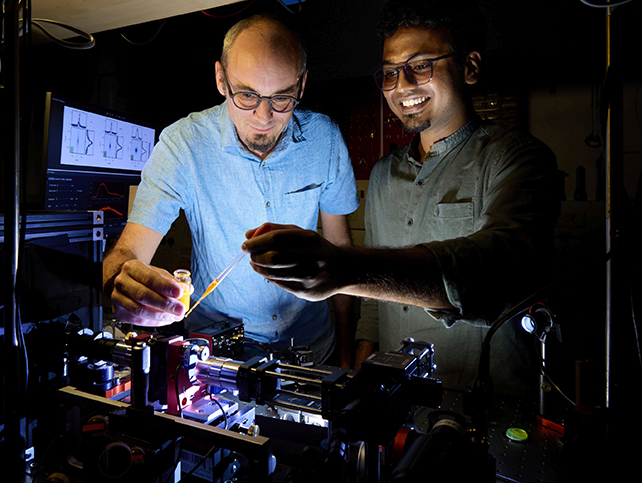ARTICLE AD
Physicists have created an exotic one-dimensional gas, trapping photons to create a state of matter known as a Bose–Einstein Condensate (BEC).
Just as a conga-line moves very differently to a crowd at a rock concert, matter's behavior depends to a significant extent on whether it's confined to a one-dimensional queue or is permitted to spread out in a two-dimensional area.
To determine the point at which this behavior changes in a quantum system, researchers from the University of Bonn and the University of Kaiserslautern-Landau in Germany conducted an experiment.
They were particularly interested in how a transition into a single-dimensional confinement altered critical properties of the gas as it cooled and underwent a phase change.
A BEC forms when certain particles, such as photons, are cooled and trapped in a space that forces them to abandon their individuality, effectively becoming a gas with a shared quantum identity.
Thanks to the way heat and quantum fuzziness spreads, the transition into this state is a touch more difficult when the particles have fewer dimensions they can freely move about in.
 The researchers at work. (Volker Lannert/University of Bonn)
The researchers at work. (Volker Lannert/University of Bonn)"Things are a little different when we create a one-dimensional gas instead of a two-dimensional one," says physicist Frank Vewinger, from the University of Bonn.
"So-called thermal fluctuations take place in photon gasses but they are so small in two dimensions that they have no real impact. However, in one dimension these fluctuations can – figuratively speaking – make big waves."
To enable the switch to a one-dimensional gas, the researchers used a tiny container called a microcavity and filled it with a dye solution. A laser was used to release photons into the solution, which facilitated their cooling. Reflective walls of the container restricted the wave-like properties of the photons, keeping them bouncing about in a confined space.
Crucially, the team developed a method of producing microscopic protrusions along the reflective walls using a transparent polymer, slowly reducing the photons' freedom.
"These polymers act like a type of gutter, but in this case for light," says physicist Kirankumar Karkihalli Umesh, from the University of Bonn. "The narrower this gutter is, the more one-dimensionally the gas behaves."
The experimental setup allowed the team to confirm theoretical predictions on the way BOSE condensates form in different dimensions. In the future, the polymer structures inside the microcavity could be adjusted to test other theories, and to explore further the fundamental behavior of these highly unusual states of matter.
For now, it's been shown that one-dimensional photon gasses don't have a precise condensation point, because the movement of the photons is so restricted – and that even in a conga-line, the laws of quantum physics take over from classical physics enough to form a partial low-energy BEC state.
"We have now been able to investigate this behavior at the transition from a two-dimensional to a one-dimensional photon gas for the first time," says Vewinger.
The research has been published in Nature Physics.

 2 months ago
21
2 months ago
21 

